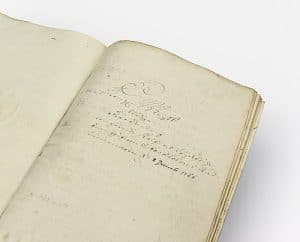The Swedish Freedom of the Press Ordinance of 1766 is among 64 documentary collections that have been added to UNESCO´s Memory of the World Register. The document is the world’s first legislation guaranteeing free communication of information.
Created by UNESCO in 1992, the Memory of the World Programme, now contains 494 listed collections. The aim of the programme is to prevent the irrevocable loss of documentary heritage – documents or collections of documents of significant and enduring value, whether on paper, audiovisual, digital or any other support. The programme aims to safeguard this heritage and make it more accessible to the general public.

On 2 December 1766, the world’s first government-sponsored declaration of freedom of the press saw the light of day in Sweden, which at that time also comprised Finland. For the first time the importance of freedom of expression, its compass and confines, was acknowledged in constitutional law. This collection includes two equally important parts: 1) the minutes and preparatory documents that explain the creation of the law, 2) the political pamphlets that illustrate its immediate and radical effect.
In addition to the Swedish entry, the complete works of the Sufi poet and philosopher Mawlana and the archives of the first meeting of the Non-Aligned Movement are among the 64 collections added this year.
Relaunch of inscriptions after six years

Inscriptions on the Memory of the World Register had to be suspended in 2017 due to disagreements between States over the nomination process. An important collective effort has enabled the procedure to be redesigned and nominations were re-launched in 2021.
“For the first time since 2017, new documentary collections have been inscribed on the Memory of the World Register,“ says Audrey Azoulay, the UNESCO Director General. “This is a very positive signal. I welcome the enthusiasm and spirit of cooperation that has accompanied this process, with more than 20% of inscriptions submitted jointly by several countries.“




